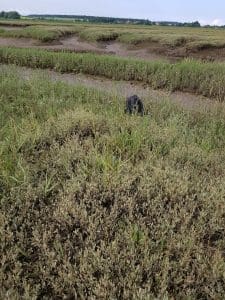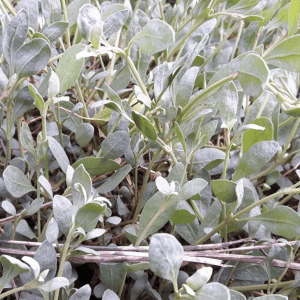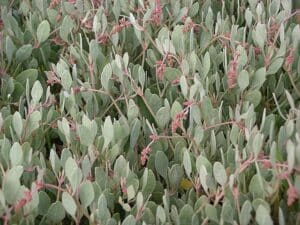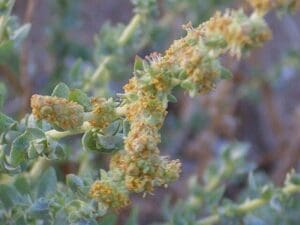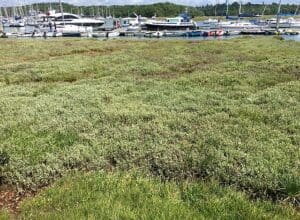Sea Purslane / Spring / Summer / Edible
Common Names
Sea Purslane
Botanical Name
Halimione portulacoides
Scientific Classification
Kingdom – Plantae
Order –Caryophyllales
Family – Amaranthaceae
Physical Characteristics for Sea Purslane
Sea purslane is a bushy perennial that sprawls along over each other and the ground, growing to 75cm in length.
Leaves
Its stalks are fairly woody, grey brown, producing succulent 2-4cm long oval shaped leaves, growing opposite on another up the stem. These are light green with a slight grey/silver tinge due to lots of very tiny hairs all over them.
Flowers
At the end of the stem it produces a cluster of minute yellow flowers which turn in to pale yellow seeds.
Habitat
Coastal areas, specifically salt marshes and sandy areas
Known Hazards
None known but when collecting be aware of any pollution such as sewage outlets and keep an eye on the tide!
The main hazards are in harvesting rather than eating.
The areas in which it is found are muddy areas where it is easy to get stuck in the mud. It is best to wear footwear with a large surface area of sole to distribute your weight evenly and reduce the depth you sink into sometimes very deep mud
Sea Purslane often grows over and hides the narrower creeks which riddle the marshes. It is therefore important to keep your eyes on the ground to identify these creeks as otherwise you can take a sudden drop and risk injury.
As the best specimens are found below the high tide mark it is important to be aware of the tidal cycles and be sure to start harvesting as the tide goes out to allow plenty of time before the tide comes back in, or you could end up swimming back! Always take a fully charged mobile phone with you and let people know where you are going and when you expect to be back. Even better, take someone with you to enjoy the sea air and help if needed.
Could be Confused with
Habitat and look make this plant near impossible to confuse with anything.
Find more coastal plant ID’s here
Edible Uses
Leaves: The leaves provide a succulent crunch of delightful mineral packed saltiness, use in salads, and raw on top of foods
Flowers and Seeds: The flowers and seeds give an even more exciting pop of flavour, use them to adorn and garnish foods or make them in to a pesto.
It’s best to collect this plant on your hands and knees with a pair of scissors, ideally look for the growth that hasn’t yet developed tough woody stems as it will be easier to cook with later. Make sure you keep one eye on the tide.
Extra notes from the Foragers
Halimione is from the Greek Halimos, meaning belonging to the sea.
When collecting from shorelines, be aware of any pollution such as sewage outlets. Also, lots of the UK coastline is designated SSSI, so ensure you are allowed or have permission to forage



